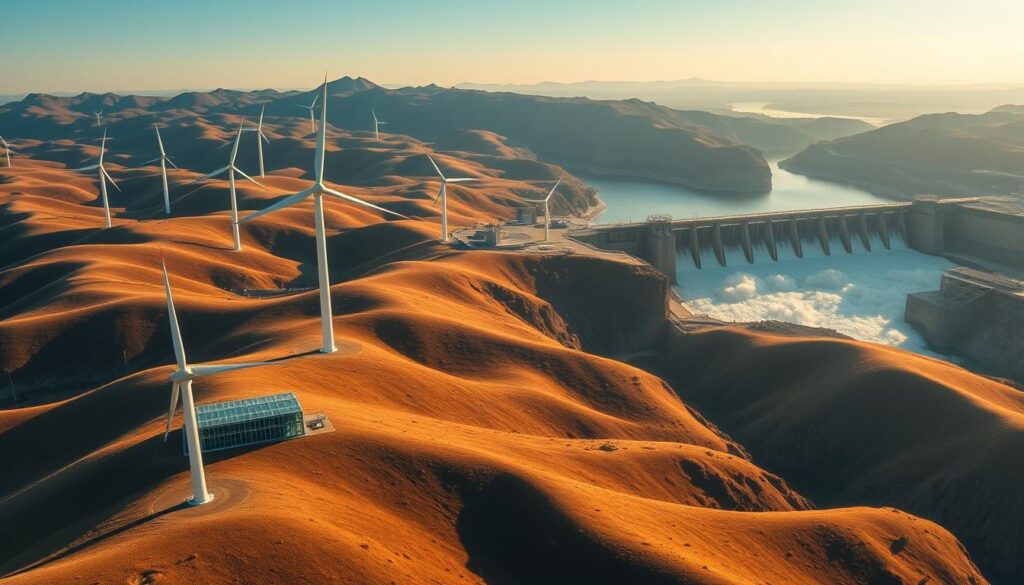Can a single source of renewable energy meet the increasing global demand for electricity? The answer lies in hydroelectric power, a clean and sustainable source that has been harnessed for decades.
The design of a hydroelectric facility is a complex task, with each project presenting unique engineering challenges. Factors such as geographical location, water flow, and environmental impact must be carefully considered.
Our step-by-step guide will walk you through the intricacies of hydroelectric plant engineering, providing insights into the process of harnessing renewable energy.
Key Takeaways
- Understanding the complexity of hydroelectric facility design
- Factors influencing the engineering of hydroelectric projects
- A step-by-step approach to renewable energy engineering
- The importance of geographical and environmental considerations
- Best practices in hydroelectric plant engineering
Introduction to Hydroelectric Plant Engineering
As one of the oldest forms of renewable energy, hydroelectric power plant engineering plays a vital role in sustainable energy production. Hydroelectric plants harness the energy of moving water to generate electricity, providing a clean and renewable source of power.
What is Hydroelectric Power?
Hydroelectric power is generated by the movement of water in rivers, oceans, or man-made channels, which drives turbines to produce electricity. This form of energy production is considered renewable because it relies on the natural water cycle, which is replenished by rainfall and snowmelt. According to the U.S. Department of Energy, hydroelectric power is one of the world’s oldest and most common energy technologies, highlighting its significance in the context of renewable energy.
Importance of Hydroelectric Plants
Hydroelectric plants are crucial for several reasons. They provide a reliable source of renewable energy, reducing dependence on fossil fuels and lowering greenhouse gas emissions. Additionally, hydroelectric plants can help regulate water resources, preventing floods and ensuring a steady water supply for irrigation and drinking water. The hydroelectric dam construction process involves careful planning to minimize environmental impacts while maximizing energy output.
Overview of the Engineering Process
The engineering process for hydroelectric plants involves several key steps, including site selection, design, and construction. Engineers must assess the hydrological characteristics of the site, design the dam and power plant, and ensure that the facility is constructed to withstand natural forces and last for decades. The hydroelectric power plant design phase is critical, as it determines the efficiency and safety of the plant.
The complexity of hydroelectric plant engineering requires a multidisciplinary approach, involving civil, mechanical, electrical, and environmental engineers. By understanding the principles of hydroelectric power and the engineering process involved, we can better appreciate the role that these plants play in our transition to a more sustainable energy future.
Fundamentals of Hydropower Generation
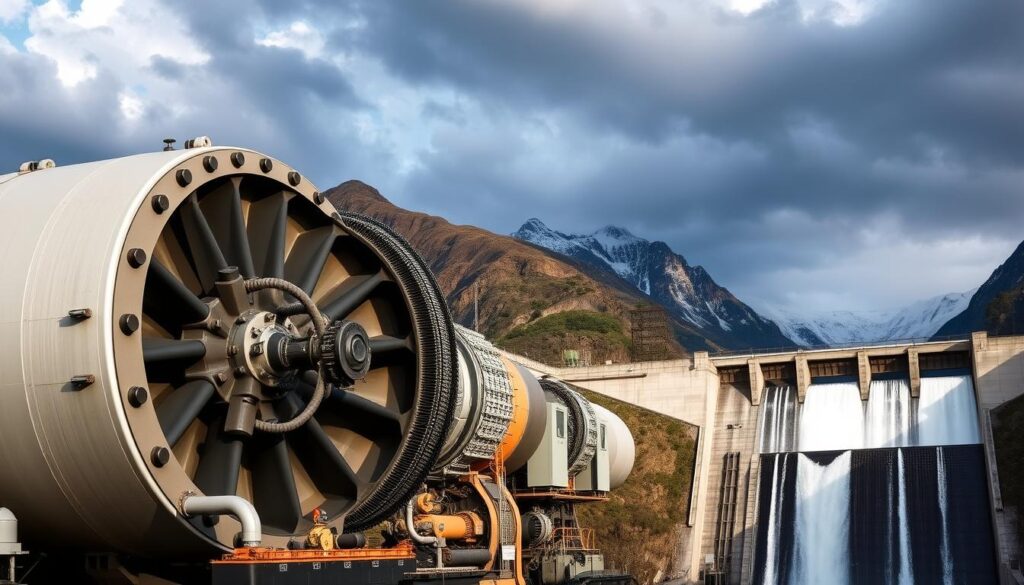
Understanding the fundamentals of hydropower generation is crucial for the development of sustainable energy projects. Hydropower generation involves harnessing the energy of water to produce electricity, a process that is both renewable and reliable.
The Hydrological Cycle
The hydrological cycle is the foundation of hydropower generation. It describes the continuous movement of water on, above, and below the surface of the Earth. This cycle involves the processes of evaporation, condensation, precipitation, and runoff, which ultimately determine the availability of water for hydropower production. The efficiency of hydropower plants depends on the understanding and prediction of this cycle.
Energy Conversion Process
The energy conversion process in hydropower plants involves converting the kinetic energy of moving water into electrical energy. This is achieved through the use of hydroelectric generator technology, where water turbines are driven by the flow of water, turning generators to produce electricity. The efficiency of this process is critical to the overall performance of the hydropower plant.
The components of a micro-hydro system, including the turbine and generator, play a vital role in the energy conversion process. Advances in water turbine engineering have improved the efficiency and reliability of these systems.
Types of Hydropower Plants
There are several types of hydropower plants, each with its unique characteristics and applications. These include:
- Run-of-river plants, which harness the energy of a river without significant storage.
- Storage plants, which use reservoirs to store water for later use.
- Pumped storage plants, which pump water from a lower reservoir to an upper reservoir during off-peak hours.
The choice of hydropower plant type depends on various factors, including the site’s hydrological characteristics and the intended use of the generated electricity. Advances in hydroelectric generator technology have made it possible to optimize the design and operation of these plants.
Site Selection for Hydroelectric Projects
The site selection process for hydroelectric projects is multifaceted, involving both technical and environmental assessments. This critical phase determines the viability and potential impact of the project.
Criteria for Site Evaluation
When evaluating a site for a hydroelectric project, several key criteria must be considered. These include the availability of water resources, the topography of the land, and the geological stability of the area. Hydroelectric dam construction requires a thorough understanding of these factors to ensure the project’s success and minimize environmental impacts.
The hydrological characteristics of the site, such as flow rate and water head, are crucial in determining the potential energy output of the project. Advanced technologies and modeling techniques are often employed to assess these characteristics accurately.
Environmental Impact Assessments
Conducting thorough environmental impact assessments is a vital part of the site selection process. These assessments help identify potential risks to local ecosystems and communities, allowing for the development of strategies to mitigate these impacts.
As part of the assessment, factors such as habitat disruption, water quality changes, and effects on local wildlife are evaluated. This information is critical for designing hydropower plant infrastructure that is environmentally sustainable.
Community and Stakeholder Considerations
Engaging with local communities and stakeholders is an essential aspect of the site selection process. Their input and concerns must be taken into account to ensure that the project is socially acceptable and beneficial to the local population.
Effective communication and collaboration with stakeholders can help address potential issues early on, facilitating a smoother project development process. This includes considering the needs and expectations of various stakeholders, from local residents to regulatory bodies.
Hydroelectric Plant Design Considerations
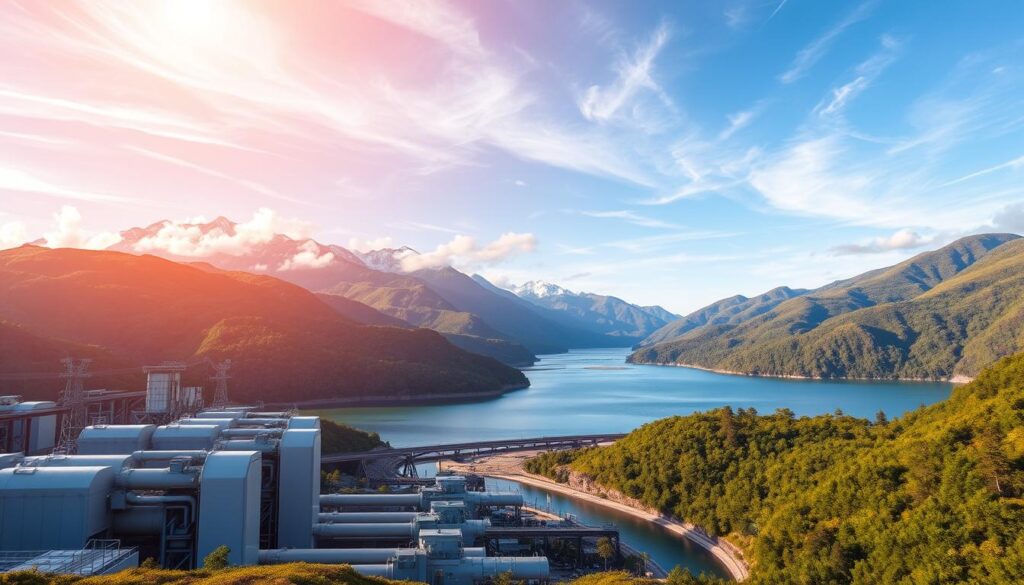
Effective hydroelectric plant design balances functionality, economy, and environmental sustainability. This balance is crucial for ensuring that the plant operates efficiently, remains cost-effective, and minimizes its ecological footprint.
Key Components of Plant Design
The design of a hydroelectric plant involves several key components, each playing a vital role in the overall functionality of the facility. These include:
- Dam and Intake Structure: The dam and intake structure are critical for controlling water flow into the plant.
- Penstock and Turbines: The penstock delivers water to the turbines, which convert the kinetic energy into electrical energy.
- Powerhouse and Electrical Systems: The powerhouse houses the electrical systems, including generators and transformers.
Engineering Specifications and Standards
Adhering to dam safety regulations and other engineering standards is paramount in hydroelectric plant design. These specifications ensure that the plant is constructed and operated safely, minimizing risks to the environment and local communities.
| Specification | Description | Importance |
|---|---|---|
| Dam Safety Regulations | Guidelines for designing and constructing safe dams. | High |
| Structural Integrity | Ensuring the dam and other structures can withstand various loads. | High |
| Environmental Impact | Assessing and mitigating the plant’s environmental footprint. | Medium |
Innovative Design Strategies
Innovative design strategies are being increasingly adopted in sustainable energy engineering to improve the efficiency and reduce the environmental impact of hydroelectric plants. These include advanced turbine designs and more sophisticated water management systems.
By incorporating these innovative strategies, hydroelectric plants can better meet the demands of sustainable energy production while adhering to stringent environmental and safety standards.
Water Resource Management
Water resource management plays a vital role in ensuring the reliability and efficiency of hydroelectric power generation. Effective management involves a comprehensive understanding of water availability, seasonal flow variations, and water quality considerations.
Assessing Water Availability
Assessing water availability is a critical step in hydroelectric plant engineering. It involves measuring flow rates and understanding the hydrological cycle to determine the potential energy output. According to the DMT Group’s water resource management services, accurate assessments are crucial for project viability.
Reliable data collection is essential for assessing water availability. This includes using advanced technologies such as remote sensing and hydrological modeling to predict water flow and availability.
Seasonal Flow Management
Managing seasonal flows is vital for maintaining the balance between water supply and demand. Hydroelectric plants must be designed to accommodate varying flow rates during different seasons. As noted by industry experts, “Seasonal flow management is crucial for optimizing energy production while minimizing environmental impacts.”
“The ability to manage seasonal flows effectively is a key factor in the success of hydroelectric projects.”
Effective seasonal flow management involves predictive modeling and adaptive management strategies to respond to changing hydrological conditions.
Water Quality Considerations
Water quality is another important aspect of water resource management in hydroelectric plant engineering. Ensuring that water quality is maintained or improved is crucial for both environmental and operational reasons.
- Monitoring water quality parameters such as pH, turbidity, and temperature.
- Implementing measures to mitigate adverse effects on water quality.
- Ensuring compliance with environmental regulations and standards.
By focusing on these aspects, hydroelectric plants can minimize their environmental footprint while maximizing energy output.
Environmental Impacts of Hydroelectric Plants
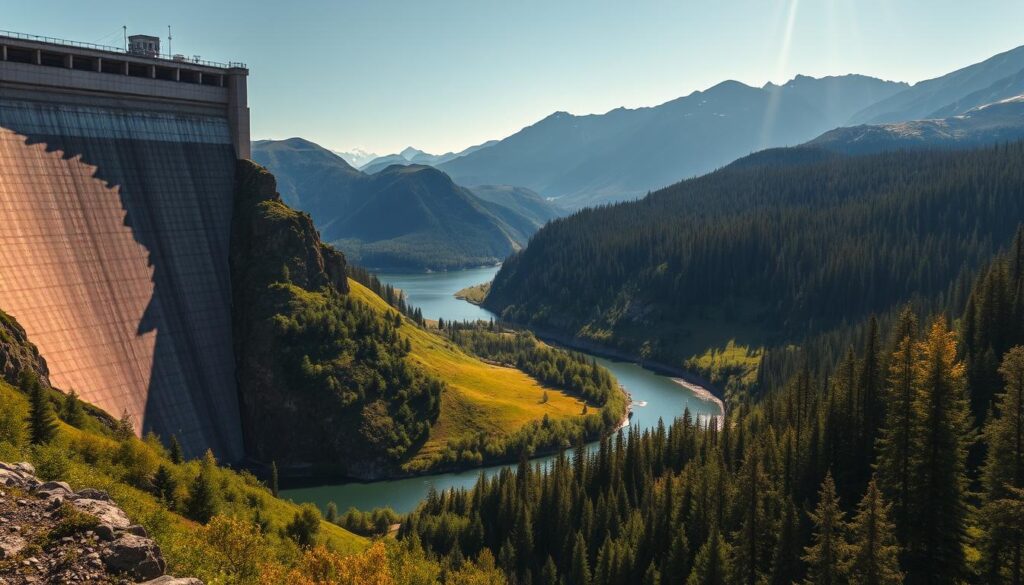
Hydroelectric facilities can have far-reaching effects on the environment, affecting both local ecosystems and broader ecological balances. While they offer a clean source of renewable energy, their construction and operation can lead to significant environmental changes.
Ecosystem Disruption
The construction of hydroelectric plants often results in the creation of reservoirs, which can lead to habitat loss and alteration of natural river flows. This disruption can affect various species, from fish populations to terrestrial animals that depend on the river’s ecosystem.
- Changes in water quality and flow can impact aquatic life.
- Reservoir creation can lead to the displacement of local communities and wildlife.
Mitigation Strategies
To minimize the environmental impacts, several mitigation strategies can be employed. These include conducting thorough environmental impact assessments before construction begins and implementing measures to protect local ecosystems.
- Fish ladders and passage systems can help maintain fish populations.
- Ecological flow releases can help mimic natural river flows.
Long-Term Environmental Monitoring
Long-term monitoring is crucial to understanding the full extent of environmental impacts and to identify areas for improvement. This involves tracking changes in water quality, biodiversity, and other ecological indicators over time. Adhering to dam safety regulations is also vital to prevent catastrophic failures.
For more insights on tackling environmental challenges through engineering, visit Engineering the Future.
Regulatory Framework and Permits
Understanding the regulatory landscape is crucial for the successful development of hydroelectric projects. The regulatory framework governing hydroelectric plants is complex, involving multiple layers of governance and a variety of permits.
Federal Regulations Governing Hydropower
Federal regulations play a significant role in shaping the hydroelectric power industry. The Federal Energy Regulatory Commission (FERC) is the primary agency responsible for overseeing the licensing of hydroelectric projects. This involves evaluating the environmental impact, ensuring compliance with federal laws, and assessing the project’s overall feasibility.
The licensing process under FERC is comprehensive, requiring detailed project plans, environmental assessments, and public input. Compliance with federal regulations such as the National Environmental Policy Act (NEPA) and the Endangered Species Act (ESA) is mandatory.
State and Local Permitting Processes
In addition to federal regulations, hydroelectric projects must also comply with state and local permitting processes. These can vary significantly depending on the project’s location, involving different state agencies and local authorities.
State regulations may cover aspects such as water rights, environmental protection, and land use. Local permits may address zoning, construction standards, and community impact. Navigating these various requirements demands a thorough understanding of the regulatory landscape at all levels of government.
Navigating Bureaucracy in Project Development
Navigating the bureaucratic aspects of project development is a significant challenge in hydroelectric power plant design. Effective project management involves coordinating with multiple stakeholders, including regulatory agencies, local communities, and other interested parties.
Developing a comprehensive permitting plan early in the project can help streamline the process. This includes identifying potential regulatory hurdles, engaging with stakeholders, and preparing detailed documentation to support permit applications.
By understanding and complying with the regulatory framework, developers can mitigate risks, avoid costly delays, and ensure the successful completion of hydroelectric projects.
Financing and Economics of Hydroelectric Projects
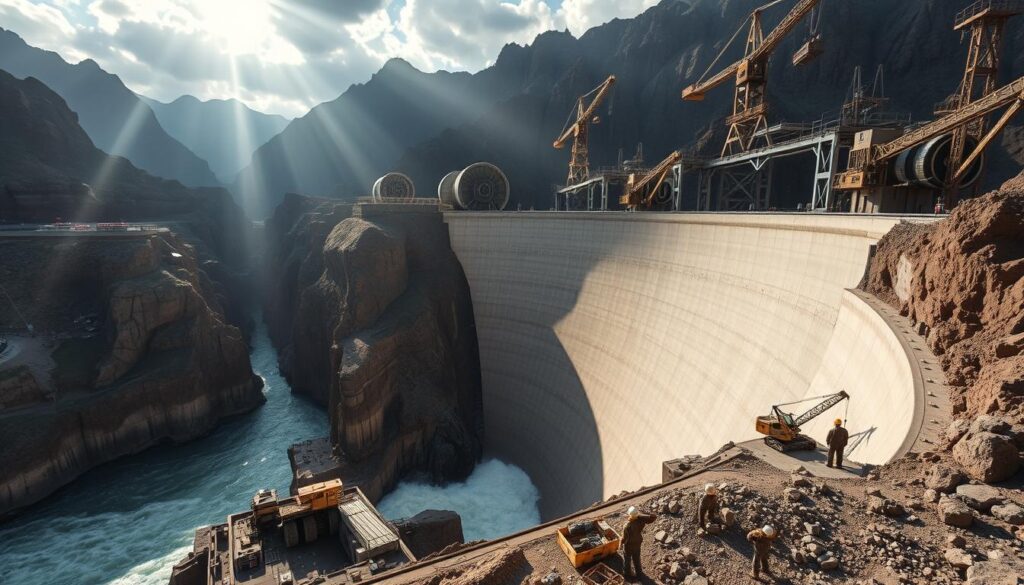
Hydroelectric dam construction requires significant investment, making financing a critical aspect of project development. The financial viability of such projects depends on a thorough understanding of project costs, available funding sources, and the economic benefits they bring to local communities.
Understanding Project Costs
The costs associated with hydroelectric projects are multifaceted, including initial investment costs, operational and maintenance expenses, and potential costs associated with environmental mitigation measures. A detailed breakdown of these costs is essential for effective financial planning.
| Cost Component | Description | Estimated Cost Range |
|---|---|---|
| Initial Investment | Includes costs of land acquisition, construction, and equipment | $1 million – $500 million |
| Operational and Maintenance | Ongoing expenses for operation, maintenance, and repairs | $500,000 – $5 million annually |
| Environmental Mitigation | Costs associated with minimizing environmental impact | $200,000 – $2 million |
Funding Sources and Investment Opportunities
Securing funding for hydroelectric projects can be achieved through various channels, including government grants, private investors, and international funding agencies. Long-term loans and project finance are particularly relevant for large-scale projects.
Investment in hydroelectric projects not only contributes to sustainable energy engineering but also offers attractive returns on investment. The use of innovative financing models can further enhance the viability of these projects.
Economic Benefits to Local Communities
Hydroelectric projects can have a significant positive impact on local economies, creating jobs during construction and operation, and stimulating local economic growth. The revenue generated from these projects can also support community development initiatives.
The economic benefits of hydroelectric projects underscore their importance in sustainable energy development and community prosperity.
Construction and Implementation Phases
The construction and implementation phases are crucial stages in the development of a hydroelectric project, requiring meticulous planning and execution. These phases are multifaceted, involving various stakeholders and necessitating a comprehensive approach to ensure the project’s success.
Project Lifespan and Phases
A hydroelectric project’s lifespan encompasses several phases, from initial planning and design to construction and eventual operation. Understanding these phases is essential for effective project management. The construction phase, in particular, is critical, as it involves the actual building of the hydropower plant infrastructure, including dams, tunnels, and powerhouses.
The project development process typically includes:
- Feasibility studies and site selection
- Design and planning
- Permitting and approvals
- Construction and implementation
- Testing and commissioning
- Operation and maintenance
For more information on project development, visit Renewable Energy World.
Construction Best Practices
Effective construction practices are vital to the successful completion of a hydroelectric project. This includes:
- Adhering to engineering specifications and standards
- Implementing robust quality control measures
- Utilizing advanced construction technologies
- Ensuring compliance with safety protocols
As emphasized by industry experts, “The use of advanced technologies, such as modular construction and digital twinning, can significantly enhance the efficiency and safety of hydroelectric project construction.”
Safety Protocols in Construction
Safety is a paramount concern during the construction phase of a hydroelectric project. Implementing stringent safety protocols is essential to protect workers and ensure the project’s timely completion. This includes:
- Conducting regular safety audits and training
- Utilizing personal protective equipment (PPE)
- Implementing emergency response plans
The integration of hydroelectric generator technology also requires careful planning to ensure safe and efficient installation.
By prioritizing safety and adhering to best practices, developers can mitigate risks and ensure the successful completion of hydroelectric projects.
Maintenance and Operation of Hydroelectric Plants
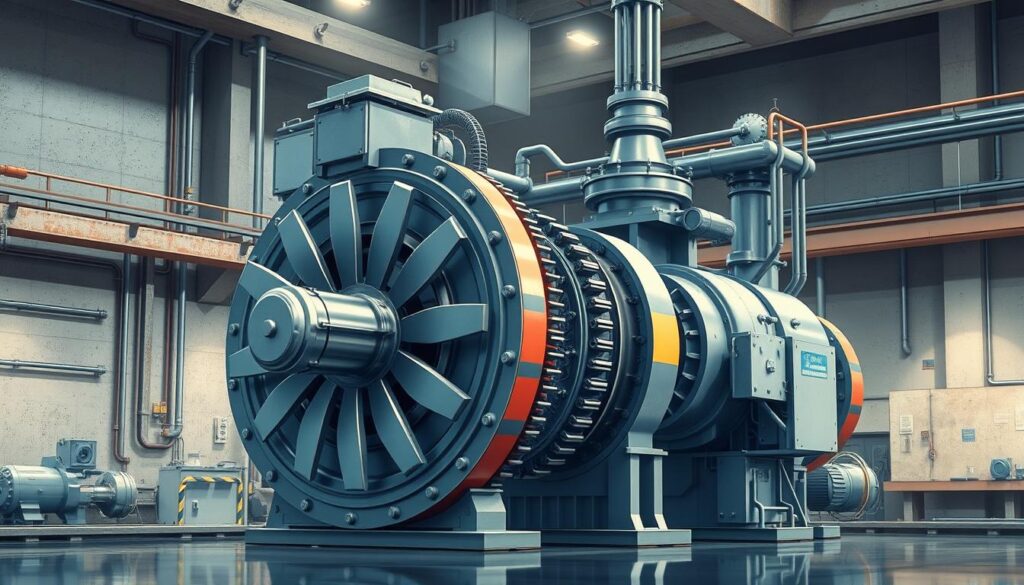
Effective maintenance and operation are crucial for the longevity and efficiency of hydroelectric plants. Properly maintained plants can operate for decades, providing a reliable source of renewable energy.
Routine Maintenance Procedures
Regular maintenance is essential to prevent equipment failure and ensure optimal performance. This includes routine inspections of the water turbine engineering components, such as turbines, generators, and control systems.
- Inspecting and replacing worn-out parts
- Checking for signs of corrosion or damage
- Performing software updates on control systems
As emphasized by industry experts, “Regular maintenance is key to maximizing the lifespan of hydroelectric plants”
Regular maintenance is key to maximizing the lifespan of hydroelectric plants.
Troubleshooting Common Issues
Despite regular maintenance, issues can still arise. Common problems include turbine vibration, generator overheating, and control system malfunctions. Effective troubleshooting requires a thorough understanding of the plant’s systems and monitoring capabilities.
For instance, turbine vibration can often be resolved by adjusting the turbine’s alignment or balancing the rotor. In cases of generator overheating, checking the cooling system and ensuring proper ventilation can mitigate the issue.
Operation Optimization Techniques
Optimizing the operation of hydroelectric plants involves maximizing energy production while minimizing environmental impact. This can be achieved through advanced operation optimization techniques, such as predictive maintenance and real-time monitoring.
By leveraging data analytics and machine learning algorithms, operators can predict potential issues before they occur, reducing downtime and improving overall efficiency. Additionally, adhering to dam safety regulations ensures the safe operation of the plant and surrounding environment.
As the industry continues to evolve, the integration of new technologies and strategies will play a crucial role in enhancing the maintenance and operation of hydroelectric plants.
Technological Innovations in Hydropower
The hydroelectric industry is on the cusp of a technological revolution, driven by innovations in turbine design and renewable energy integration. As the world shifts towards cleaner energy sources, hydroelectric power is poised to play a pivotal role in the global energy mix.
Recent advancements in hydroelectric generator technology have significantly improved the efficiency and output of hydroelectric plants. One of the key areas of innovation is in turbine technology.
Next-Gen Turbine Technologies
Next-generation turbines are being designed to maximize energy production while minimizing environmental impact. For instance, variable speed turbines can adjust their speed to optimize energy production based on the available water flow, enhancing overall efficiency.
According to industry experts, “The development of more efficient turbines is crucial for the future of hydroelectric power, as it allows for more electricity to be generated from the same amount of water” (
).
- Advanced materials are being used to improve turbine durability and reduce maintenance costs.
- Innovative designs, such as fish-friendly turbines, are being implemented to reduce the ecological footprint of hydroelectric plants.
Use of Artificial Intelligence
Artificial Intelligence (AI) is being increasingly integrated into hydroelectric plant operations to optimize performance and predict maintenance needs. AI algorithms can analyze data from various sensors to predict potential issues before they occur, reducing downtime and improving overall efficiency.
| AI Application | Benefits |
|---|---|
| Predictive Maintenance | Reduces downtime, improves efficiency |
| Performance Optimization | Maximizes energy production, minimizes waste |
Advancements in Renewable Integration
The integration of hydroelectric power with other renewable energy sources is becoming increasingly important for creating a stable and reliable energy grid. Hydroelectric plants can provide a balancing effect to intermittent energy sources like solar and wind, ensuring a consistent power supply.
As noted by a recent study, “The combination of hydroelectric power with other renewables can significantly enhance grid stability and reliability” (
The future of hydroelectric power is bright, with technological innovations set to play a crucial role in shaping the industry. As we continue to push the boundaries of what is possible in renewable energy engineering, we can expect to see even more efficient and sustainable hydroelectric plants.
Case Studies of Successful Hydroelectric Projects
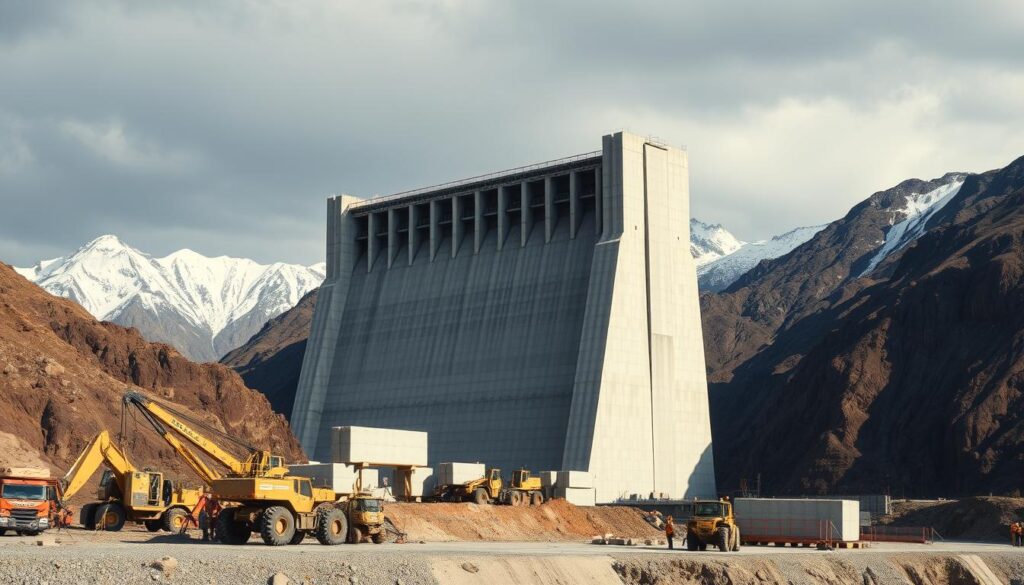
Successful hydroelectric projects provide crucial case studies for understanding the complexities and benefits of hydropower infrastructure. These projects not only demonstrate the potential of renewable energy sources but also offer valuable insights into effective engineering practices and project management.
Key Projects in the United States
The United States has seen numerous successful hydroelectric projects, each contributing significantly to the national energy grid. For instance, the Hoover Dam is a landmark example of hydroelectric engineering, providing power to millions while showcasing innovative construction techniques. Another example is the Glen Canyon Dam, which has been a critical component of the Colorado River Storage Project since its completion.
These projects highlight the importance of thorough planning, environmental consideration, and community engagement. The Hoover Dam, for example, was a pioneering effort in large-scale hydroelectric dam construction, setting precedents for future projects.
Lessons Learned from Global Examples
Globally, there are numerous hydroelectric projects that have provided valuable lessons for the industry. The Three Gorges Dam in China, one of the world’s largest hydroelectric dams, has demonstrated both the potential and challenges associated with large-scale hydropower projects. While it has significantly increased China’s renewable energy output, it has also raised environmental and social concerns.
Other international examples, such as the Itumbiara Dam in Brazil, have shown the importance of careful site selection and environmental impact assessments. These case studies underscore the need for comprehensive planning and stakeholder engagement in hydroelectric project development.
For more detailed case studies and good practice examples, refer to the International Commission for the Protection of the Danube document, which provides insights into various hydroelectric projects and their outcomes.
Best Practices for Future Projects
Analyzing successful hydroelectric projects reveals several best practices that can be applied to future developments:
- Conduct thorough environmental impact assessments to minimize ecological disruption.
- Engage with local communities and stakeholders to ensure project acceptance and support.
- Implement innovative engineering solutions to enhance efficiency and reduce costs.
- Ensure robust planning and project management to stay within budget and timeline.
By adopting these best practices, future hydroelectric projects can maximize their benefits while minimizing their environmental footprint.
Conclusion: The Future of Hydroelectric Plant Engineering
Hydroelectric plant engineering continues to evolve, driven by advancements in sustainable energy engineering and renewable energy engineering. As the world shifts towards cleaner energy sources, hydropower remains a vital component of the global energy mix.
Emerging Trends
The industry is witnessing significant trends, including the integration of next-generation turbine technologies and the use of artificial intelligence to optimize plant operations. These innovations are crucial for enhancing efficiency and reducing environmental impacts.
Role in Sustainable Energy
Hydropower plays a pivotal role in sustainable energy systems, offering a renewable and reliable source of power. As the demand for clean energy grows, the importance of hydroelectric plants in meeting global energy needs will continue to increase.
Addressing Engineering Challenges
Despite its benefits, hydroelectric plant engineering faces challenges, including environmental concerns and complex regulatory frameworks. Addressing these challenges requires innovative solutions and collaborative efforts among stakeholders.
By embracing advancements in technology and sustainable practices, the hydroelectric industry can continue to thrive, contributing to a more sustainable energy future.
